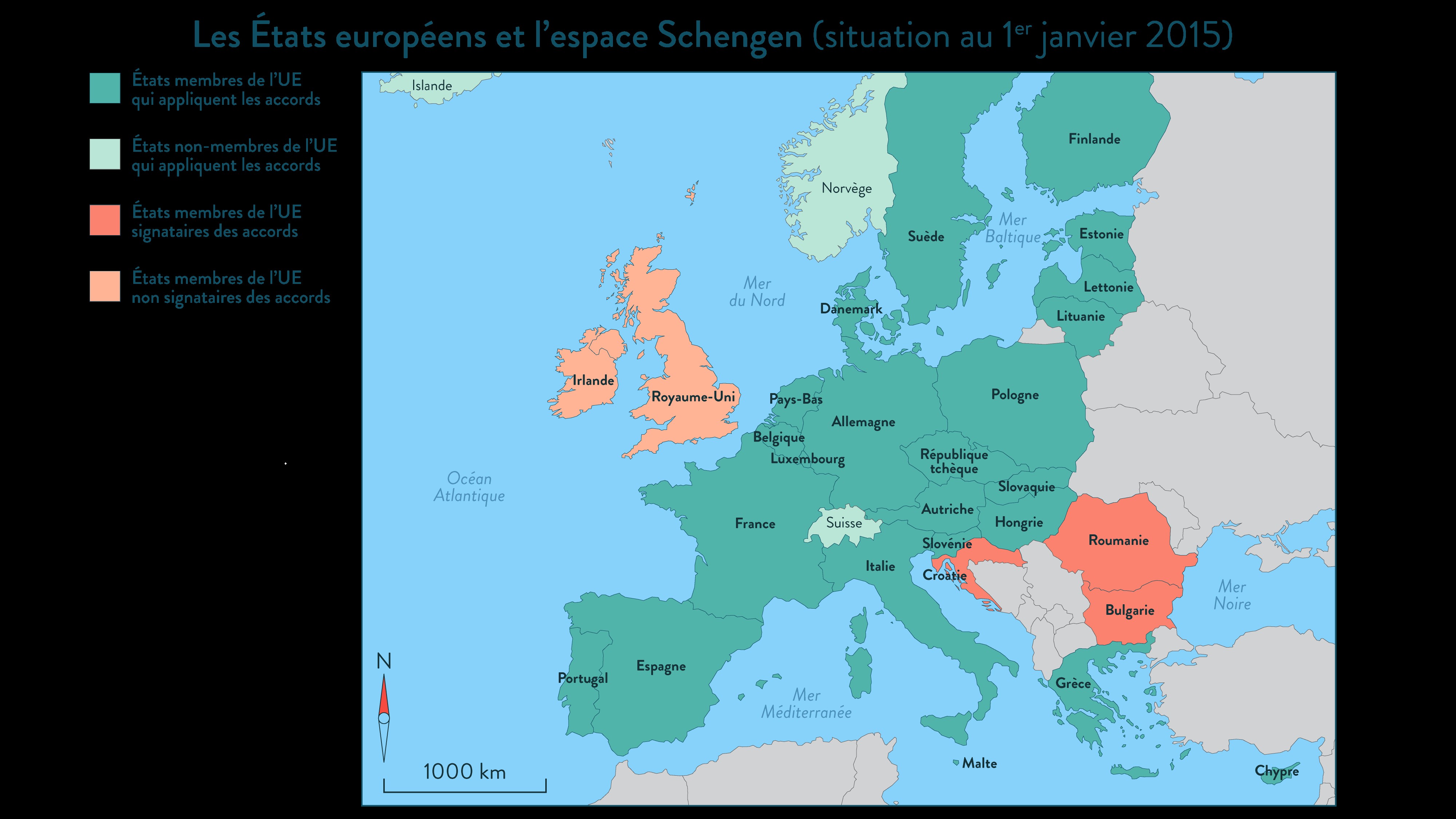- At the time of the signing of the Treaty of Rome, which marked the founding of the European Union on March 25, 1957, the free movement of persons was provided for.
- Free movement of persons is one of the four freedoms enshrined in the Single European Act, signed on 17 and 28 February 1986.
June 14, 1985

Procedure
The Schengen agreements were signed on June 14, 1985 between France, Germany, Luxembourg, Belgium and the Netherlands. These agreements should make it possible to gradually abolish controls at the borders of the States, and thus aim to establish free movement within the area concerned by these agreements. The agreements are based in particular on the abolition of police checks at the borders of the signatory States, increased controls at the external borders of the EU, and the harmonization of policies related to immigration.
These agreements are included in a convention which comes into force in 1995, in particular harmonizing the controls of travelers within the Schengen area.
Consequences
- The Schengen agreements were included in the Treaty of Amsterdam in 1999:they are therefore fully part of European law. The first signatories were joined by Italy (1990), Spain and Portugal (1991), Greece (1992), Austria (1995), then by Denmark, Finland and Sweden (1996) . The Schengen agreements now concern 26 States.
- The Schengen agreements have been difficult to implement, in particular because of the different practices of the signatory States concerning policies on immigration, movement and access to nationality (droit soli and droit des sang).
